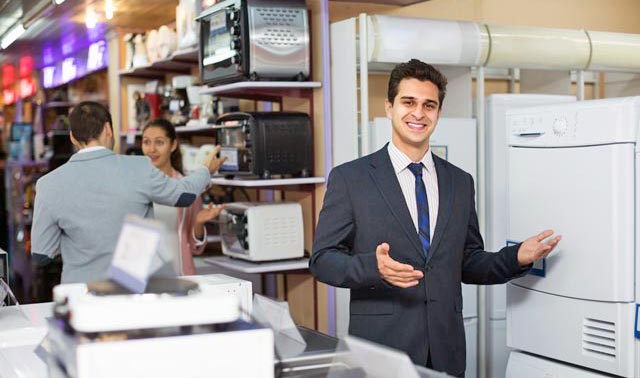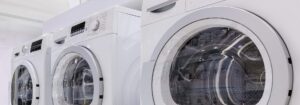Coffee is more than just a beverage; it’s a ritual, a daily necessity for millions around the world. The diversity in coffee preferences is matched only by the variety of coffee makers available to brew that perfect cup. From classic drip brewers to trendy espresso machines, each type of coffee maker caters to different tastes and brewing styles.
In this comprehensive guide, we’ll explore the intricacies of various coffee makers, helping you choose the one that best suits your preferences.
Drip Coffee Makers
Overview: Drip coffee makers are the workhorses of the coffee world. They’re easy to use and perfect for brewing multiple cups at once. Water is dripped over coffee grounds in a filter, producing a straightforward and consistent brew.
The quality of a drip coffee maker can vary depending on several factors, including the brand, model, and specific features. A good drip coffee maker should be capable of reaching and maintaining the optimal brewing temperature, usually between 90 to 96 degrees Celsius. This temperature is crucial for extracting the best flavours from the coffee grounds.
The brewing time should be consistent and appropriate. Too short a brewing time may result in under-extraction, producing weak coffee, while too long may lead to over-extraction, resulting in a bitter taste.
Drip coffee makers are known for their simplicity. Users typically add ground coffee to a filter, pour water into the reservoir, and press a button to start the brewing process. This ease of use makes them popular among both casual coffee drinkers and those with limited time in the morning.
While drip coffee makers are indeed among the most popular types of coffee makers, it’s worth noting that other types of coffee makers, such as espresso machines and pour-over setups, also have significant market shares.
Best for: Busy mornings, offices, and households with multiple coffee drinkers.
Single-Serve Pod Machines
Overview: Single-serve pod machines, also known as pod or capsule coffee makers, have become increasingly popular for their convenience and ease of use. These machines use coffee pods or capsules to brew a single cup of coffee with minimal effort.
Single-serve pod machines are known for their simplicity. The user places a single coffee pod into the machine’s designated chamber. When the machine is activated, it punctures the pod to allow hot water to flow through the coffee grounds inside.
Similar to capsule espresso machines, single-serve pod systems are often brand-specific. Users are typically limited to the pods produced by the specific brand or model of their machine. While convenient, the cost per cup of coffee brewed with pods can be higher compared to other brewing methods, such as using ground coffee or whole beans.
Best for: Those who want quick, hassle-free brewing with minimal clean-up.
Espresso Machines
Overview: Espresso machines are designed to brew a concentrated shot of coffee by forcing hot water through finely-ground coffee.
These machines are widely used in both commercial settings, such as cafes and restaurants, as well as in homes for enthusiasts who appreciate a high-quality cup of espresso. They form the base for many other popular coffee drinks.
Espresso is brewed quickly, usually in about 25 to 30 seconds. This timing is crucial for achieving the right balance of flavours. Too short of an extraction may result in underdeveloped flavours, while too long may lead to bitterness.
A well-brewed espresso should have a layer of golden-brown crema on top. Crema is a combination of coffee oils and carbon dioxide that is produced during the high-pressure extraction process. It contributes to the rich flavour and mouthfeel of espresso.
When choosing an espresso machine, factors to consider include your level of expertise, desired level of control, ease of use, budget, and the volume of drinks you plan to prepare. High-quality espresso machines can be a significant investment, but they offer the ability to enjoy a wide range of espresso-based beverages at home or deliver consistent results in a commercial environment.
Best for: Espresso enthusiasts, those who enjoy lattes and cappuccinos. If you prefer a smaller, intense shot of coffee, an espresso machine might be the better choice.
French Press
Overview: This manual brewing method involves steeping coarsely ground coffee in hot water before pressing down a plunger to separate the grounds. It produces a robust and full-bodied cup.
The recommended coffee-to-water ratio for a French press is generally around 1:15 or 1:17, depending on personal preferences. This means, for example, using 28 grams of coffee for every 450-500 millilitres of water. Once the plunger is fully pressed down, the brewed coffee is ready to be poured directly from the French press into your cup.
French press coffee is known for its full-bodied flavour and the presence of natural oils from the coffee beans.
Best for: Those who appreciate a hands-on brewing process and a richer coffee flavour.
Bean to Cup Coffee Machine
Overview: A bean-to-cup coffee machine is a type of coffee maker that automates the entire coffee brewing process, starting from whole coffee beans.
These machines typically have an integrated coffee grinder, allowing users to use fresh coffee beans for each cup. This step ensures that the coffee retains maximum flavour and aroma.
One of the main advantages of bean-to-cup machines is their automation. Users typically only need to add water, coffee beans, and, in some cases, milk. The machine takes care of the rest, from grinding to brewing. Some bean-to-cup machines come with a milk frother or steamer, allowing users to make specialty drinks like cappuccinos or lattes.
Many bean-to-cup machines allow users to customise various brewing parameters such as the grind size, coffee strength, water temperature, and sometimes even the brewing time. This customisation allows users to tailor the coffee to their preferences.
Best for: Bean-to-cup coffee machines are suitable for coffee enthusiasts who want the freshness of whole beans without the manual effort of grinding and brewing each cup separately.
Pour-Over Coffee Makers
Overview: Pour-over coffee makers offer control over the brewing process, allowing you to pour hot water over coffee grounds manually. It’s a method that emphasizes precision and quality.
Best for: Coffee connoisseurs who enjoy experimenting with different brewing variables.
AeroPress
Overview: The AeroPress is a portable, lightweight device that uses air pressure to push hot water through coffee grounds. It’s known for its versatility and ability to produce a clean and smooth cup.
Best for: Travelers, those who appreciate a quick and easy brewing process.
Cold Brew Coffee Makers
Overview: Cold brew coffee makers steep coffee grounds in cold water over an extended period, resulting in a smooth, less acidic brew.
Cold brew coffee makers usually have a large filter or mesh basket to hold coarsely ground coffee. This allows for better extraction of flavours during the steeping process. After the steeping process, cold brew coffee needs to be filtered to separate the liquid from the coffee grounds.
Best for: Those who prefer iced coffee and a milder coffee flavour.
Capsule Espresso Coffee Maker
Overview: Capsule espresso machines use pre-portioned coffee capsules or pods. These capsules typically contain a measured amount of coffee grounds, ensuring consistency in flavour and strength with each use.
Capsule espresso machines are designed for simplicity. Users insert a coffee capsule into the machine, press a button, and the machine automatically punctures the capsule, brews the espresso, and disposes of the used capsule.
While capsule espresso machines offer convenience and consistency, they also have some considerations. Capsules are typically more expensive per unit than buying whole coffee beans. Over time, the cost of regularly purchasing coffee capsules can add up, making the per-cup cost higher compared to other brewing methods.
Best for: Espresso lovers looking for convenience.
Stovetop Pot Coffee Maker
Overview: Stovetop coffee makers, like the Moka pot, use heat and pressure to brew coffee but have a distinct design. They offer a strong and flavourful cup.
A stovetop coffee maker typically consists of three parts: a bottom chamber for water, a middle chamber for coffee grounds, and an upper chamber for the brewed coffee.
The top and bottom chambers are screwed together, creating a sealed unit. The design of the stovetop coffee maker ensures that, as the water in the bottom chamber heats up, pressure builds up, forcing the water through the coffee grounds.
It’s important to note that while stovetop coffee makers produce a coffee concentrate, the result is not true espresso. The pressure and extraction process are different from that of an espresso machine.
Best for: Stovetop enthusiasts who appreciate a unique brewing method.
Grind and Brew Coffee Maker
Overview: Grind and brew machines combine the coffee grinder and brewer in one, allowing you to enjoy freshly ground coffee for a richer flavour.
The primary feature of grind and brew coffee makers is the integrated coffee grinder. This grinder is often adjustable, allowing users to choose their preferred grind size, which is essential for optimising the extraction process.
Grinding coffee beans just before brewing maximizes the freshness of the coffee. The oils and aromas released during grinding contribute to a more flavourful cup.
Best for: Those who value the freshness of ground coffee and convenience of an all-in-one brewing solution.
Barista Coffee Machines
Overview: Barista coffee machines are professional-grade espresso machines designed for use by skilled baristas in cafes, coffee shops, and other commercial settings. These machines are engineered to produce high-quality espresso and other espresso-based beverages.
These machines require the barista to manually control the brewing process, including water flow and pressure. Precise control over water pressure and temperature is crucial for extracting the best flavours from coffee beans. High-end barista machines allow baristas to adjust these parameters to suit different coffee beans and preferences.
Many barista machines include water filtration systems to ensure that the water used for brewing is free from impurities that could affect the flavour of the coffee.
Best for: Barista coffee machines are an investment for businesses serious about delivering high-quality coffee.
Dual boiler coffee machines
Overview: Dual boiler coffee machines, often referred to as double boiler espresso machines, are advanced espresso machines equipped with two separate boilers for simultaneous brewing and steaming.
Each boiler in a dual boiler system can be independently controlled for temperature. This design enhances the efficiency and precision of the brewing process, allowing baristas or enthusiasts to pull shots of espresso and steam milk simultaneously.
Best for: Dual boiler espresso machines are popular in both commercial settings, such as cafes and coffee shops, as well as among serious home baristas who want professional-grade equipment.
Find the right coffee maker
Choosing the right coffee maker is a personal decision, influenced by your taste preferences, lifestyle, and brewing expertise. Whether you’re a busy professional who needs a quick cup in the morning or an aspiring barista looking to perfect your pour-over technique, there’s a coffee maker out there for you. Experiment with different types, explore new brewing methods, and savour the delightful journey of discovering your perfect cup of coffee.




